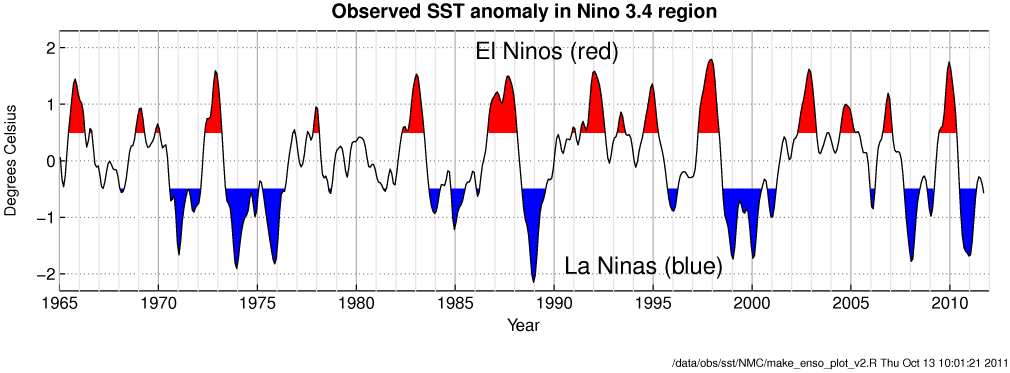

It is instructive to check past predictions to see how well the various models do. Our model (the Scripps/MPI forecasting model) tends to do especially well at predicting La Ninas (cold events). Here is a prediction of tropical sea surface temperature anomaly made in March 1998 compared to another respected forecast model, and showing what actually happened:

As you can see, we got this one pretty much spot on.
There have been many El Niños observed in the past. There every reason to think that they have been happening for many thousands of years.
This plot shows one common way the historical record of El Niños is displayed:

On the X axis is the year, going from 1965 to 2010. On the Y axis is the SST anomaly observed in the tropical Pacific (hey! What is an SST anomaly?). This is averaged over a region people who study El Niños call the "Niño-3.4 region" (show me a picture of the Niño-4 region).
Look on the graph. When the difference from average conditions gets above 0.5 Celsius or so (red areas), you're in a warming period that is probably an El Niño. When the difference from average conditions gets below -0.5 Celsius (blue areas), it's in what's called the "cold phase", or "La Nina". You can see the large El Niños of 1997/1998, and other large ones in 1982/83 and 1987.
Last modified: 13 October 2011
Contact: dpierce@ucsd.edu
Copyright © 2000 David W. Pierce. All rights reserved.